Pantex Blog
Wild Pantex – Panhandle Texas Horned Lizards: Small, Yet Resourceful
Article by Jim Ray, Pantex Wildlife Biologist/Scientist
Most of us who were raised in Texas and the adjoining states in the early and middle portions of the 20th Century have fond memories of the Texas horned lizard, which we called the horny toad. This flat and well-armored lizard was quite abundant in my hometown of Dalhart, Texas. As a child, I spent many an hour searching for them, studying them a few minutes, and then allowing them to continue on their way. Now, less abundant or even absent from much of its original range, this species of horned lizard is protected in Texas and is the subject of many research questions which will hopefully comprise the pieces to the puzzle as to why this species has declined in many areas.
The U.S. Department of Energy/National Nuclear Security Administration Pantex Plant where I work happens to still have a good population of Texas horned lizards. In fact, I find they are still abundant in grassland areas of this part of the state. As the Pantex wildlife biologist (and with proper permits in hand) I have had a great opportunity over the last 18 years to continue to play with these lizards. Better yet, one of the first two research projects that we have initiated here at Pantex was one working on Texas horned lizards and other herpetofauna (reptiles and amphibians) in collaboration with Dr. Richard Kazmaier of West Texas A&M University. We studied this reptile on site for nearly a decade, even using tiny radio-transmitter backpacks for tracking and determining its habitat needs here in the shortgrass prairies of the Southern Great Plains.
One very interesting aspect of our research was a contradiction that we found relative to previously known research on the lizard’s diet. Diet analyses of a large sample of Texas horned lizards at Pantex and another research site studied by West Texas A&M indicated that Panhandle lizards are more generalists in their diet than horned lizards from other areas. These lizards are widely known to primarily consume several species of the harvester ant, most notably the red harvester ant (Pogonomyrmex barbatus). Although various species of ants still comprise the majority of their diet, Panhandle horned lizards tend to consume more of the much smaller species of ants, as well as other invertebrate prey.
The fact that these “northern” horned lizards are smaller than those in the rest of the state likely plays a role in this difference of diet. The energetics associated with the smaller body size allows them to subsist on smaller invertebrate prey. Or is it the opposite? Does the small body size come from the lower dependence on the large harvester-ant species? Although harvester-ant colonies may still be an important component of their habitat across their range, being more of a generalist allows the lizards in the Texas Panhandle to survive should harvester-ant colonies be less abundant than in other areas or between years.
Please feel free to share this link with others who enjoy wildlife or that appreciate entities that strive to contribute to wildlife conservation.
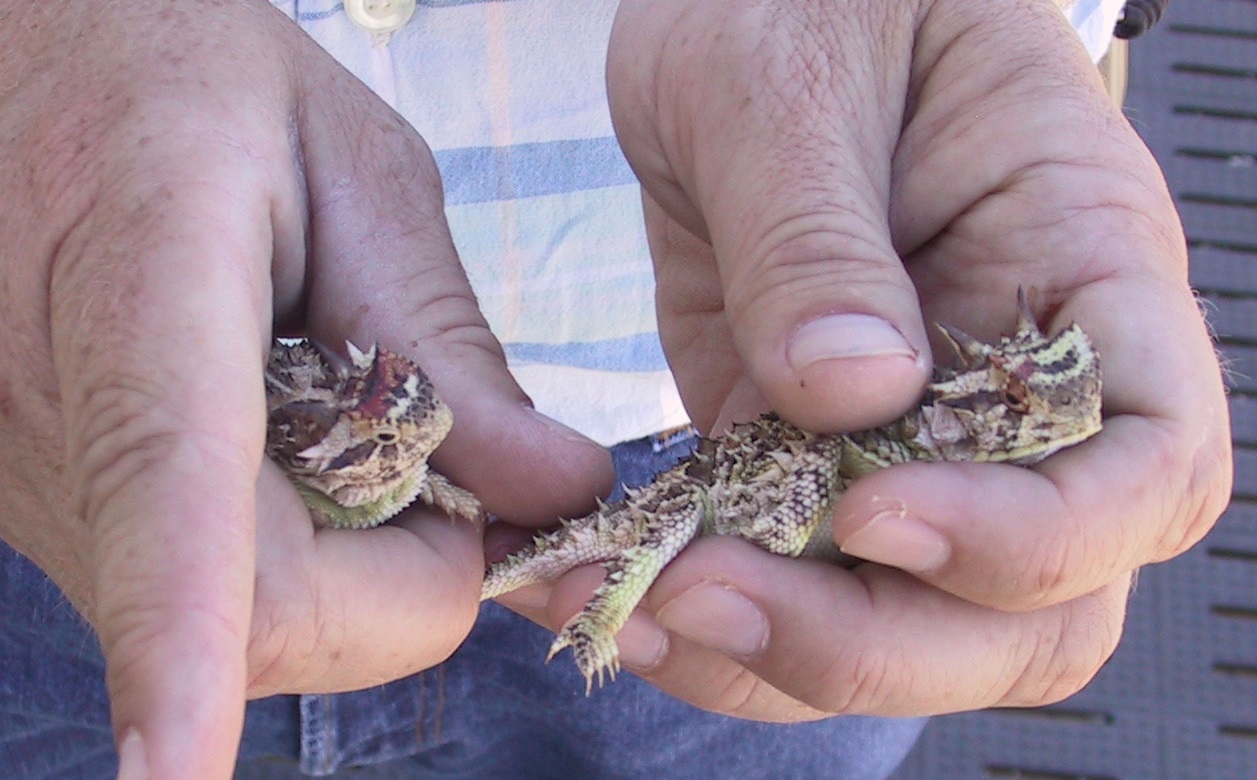
Photo: Both of these Texas horned lizards exhibited blood-squirting behavior (from the eyes as a defense strategy) upon capture as part of research on the U.S. Department of Energy/National Nuclear Security Administration Pantex Plant. Pantex and West Texas A&M staff possessed the required permits to capture and handle these lizards for research purposes.
Secretary Perry visits Pantex
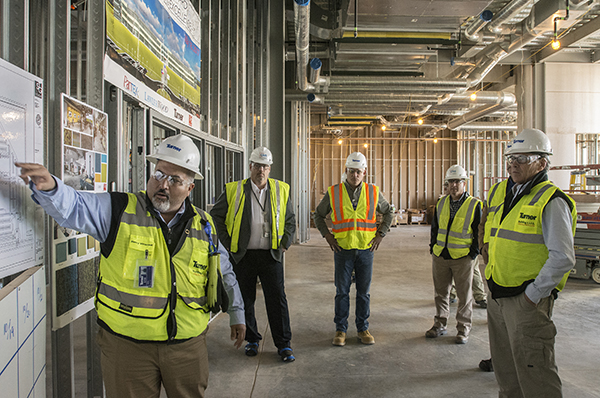 Secretary of Energy Rick Perry tours the Administrative Support Complex construction site during his first visit to the Pantex Plant.
Secretary of Energy Rick Perry tours the Administrative Support Complex construction site during his first visit to the Pantex Plant.Secretary of Energy Rick Perry recently made his first visit to the Pantex Plant to observe operations and tour new facilities. He toured the Administrative Support Complex construction site, bays and cells used for weapon assembly and disassembly activities, and a weapon and component staging area. Secretary Perry also viewed the new Confined Large Optical Scintillator Screen and Imaging System (known as CoLOSSIS II) and a live-fire demonstration of the Common Remotely Operated Weapons System. The visit provided Consolidated Nuclear Security, LLC an excellent opportunity to showcase Pantex’s important role in America’s security and the site’s ongoing infrastructure revitalization efforts.
Pantexan’s dissertation named best of the year

Pantex’s Mike Bromley of Projects Management recently received the 2017 American Society for Engineering Management Best Dissertation award at the organization’s International Annual Conference in Huntsville, Alabama.
The engineering and management professionals in the ASEM remarked that Bromley’s dissertation integrated analytical and managerial concerns with quality design and data collection, resulting in conclusions with application to many organizations.
The analysis of his dissertation, Economic Analysis Model for High Reliability Organizations, required significant input related to plant operations, facilities, personnel, costs, events, incidents, and accidents. Bromley said he appreciated the helpful input from many Pantex subject matter experts on meteorology, asbestos, cost estimating, safety analysis, process engineering, and high explosives. He also added that a non-employee could never have collected the required data, and it was a challenge to keep everything unclassified.
Pantex and Y-12 employees receive NA-50 Awards
The newly designated NA-50 Excellence Awards recently were presented at Pantex by NNSA Associate Administrator for Safety, Infrastructure, and Operations James McConnell and at Y-12 by NNSA Administrator Lt. Gen. Frank Klotz (Ret.). The award recognizes teams and individuals for outstanding accomplishments involving innovation, effectiveness, teamwork, overcoming adversity, and enabling future success.
CNS President and CEO Morgan Smith commended the honorees by saying, “The work we do is unique. We play a key role in the defense of the nation and the stability of the world. We face the challenge of meeting this important mission while working in facilities that are well past their intended life. Your work has helped tackle infrastructure issues that, if left unaddressed, could have exposed a risk to employees, the mission, or the environment.”
At Pantex and Y-12, the CNS Construction team was recognized for its operations with zero recordable injuries in fiscal year 2016, and the Development and Approval team for the Administrative Support Complex (Kirk McCutcheon at Pantex, Tom Smith at Y-12) was recognized for its work to develop the foundation and business case, as well as the extensive approval process.
One other Pantex award included the Outage Process Execution team, being recognized for the high-voltage distribution system outages conducted safely in support of the NNSA mission at Pantex.
Other Y-12 awards recognized: the team replacing some 700 fire suppression system sprinkler heads in Building 9204-2, the team that reroofed three Manhattan Project–era buildings as part of the Excess Facilities Disposition Program Roof Asset Management Program Risk Reduction project, the team that repaired the concrete beam in Building 9204-2, and the team that pursued multiple direct- and indirect-funded projects to reduce risks posed by excess facilities.
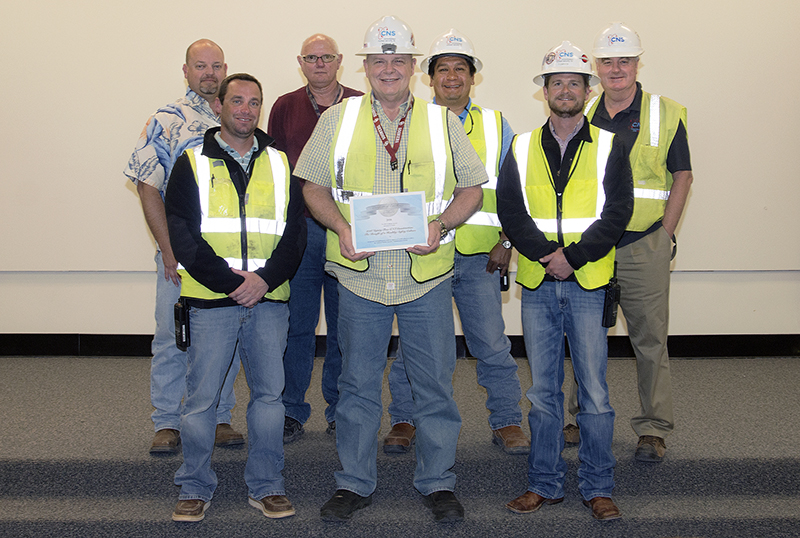
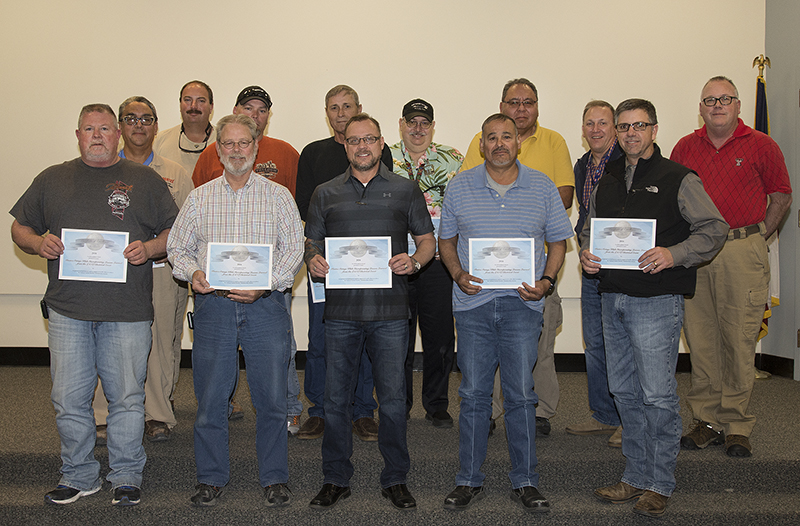
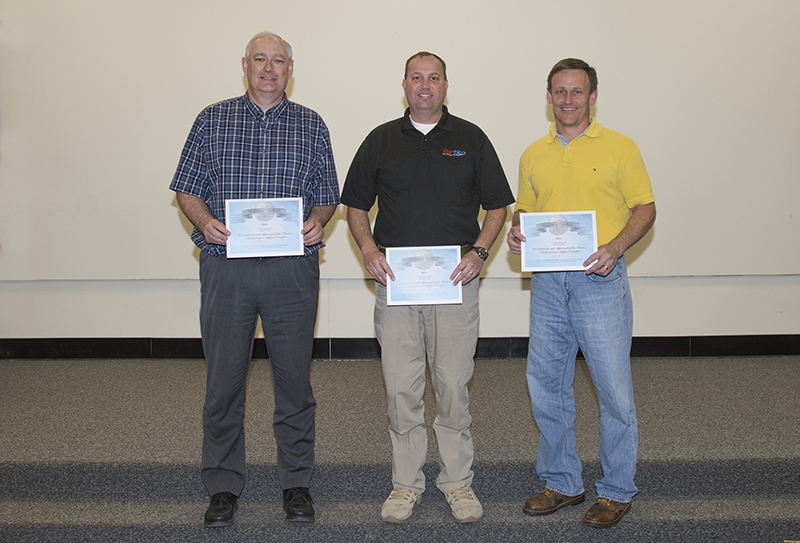
Progress continues at the ASC
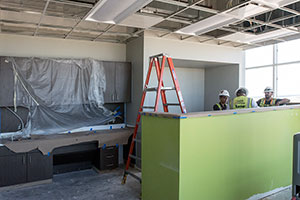
The skyline around Pantex continues to change as work at the Administrative Support Complex progresses. What was a field of milo this time last year is now an expansive building that grows closer and closer to completion with each passing day. Currently, the ASC is on schedule, and several areas of the building are nearing completion.
With the exterior nearly finished, the work indoors has begun to ramp up. For example, on the third floor of the west wing, drywall, painting, the break room, and bathrooms are complete and will serve as the mockup for the remaining break rooms and bathrooms for the rest of the building.
Major mechanical equipment, such as chillers, air handlers, plumbing lift station, and electrical transformers, have now been installed, and the domestic water line between the ASC and Pantex is now in operation. Not only is the skyline changing but traffic and roads are as well. The acceleration and de acceleration lanes on FM 2373 were completed recently and will provide relief for traffic entering and exiting the ASC area.
Upcoming milestones include the completion of the overhead power and the exterior envelope of the building, which is scheduled to take place this month. This month, crews will begin installing furniture, and the parking lot should be completed.
With the progress comes more people working at the ASC site. The number of workers has reached its peak.
